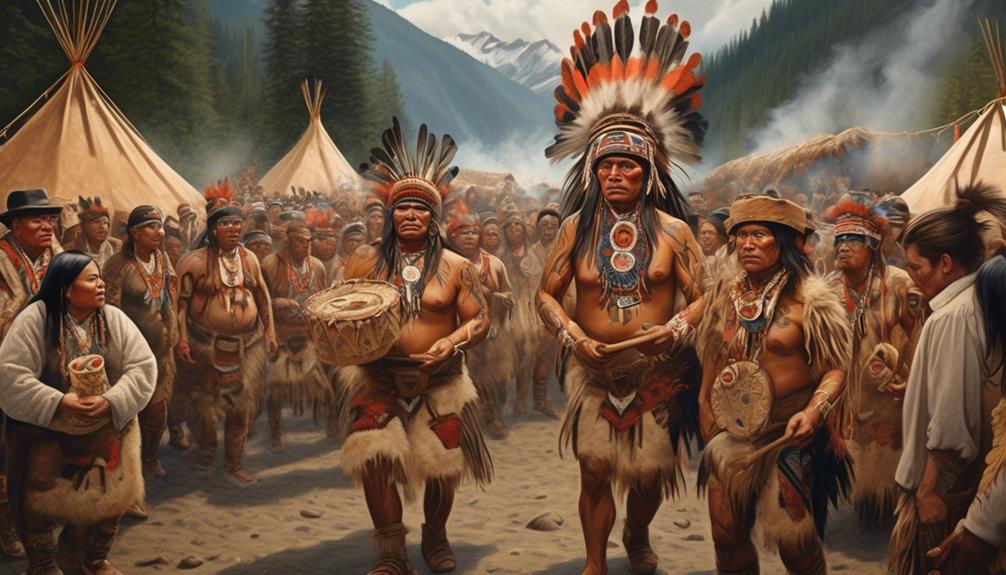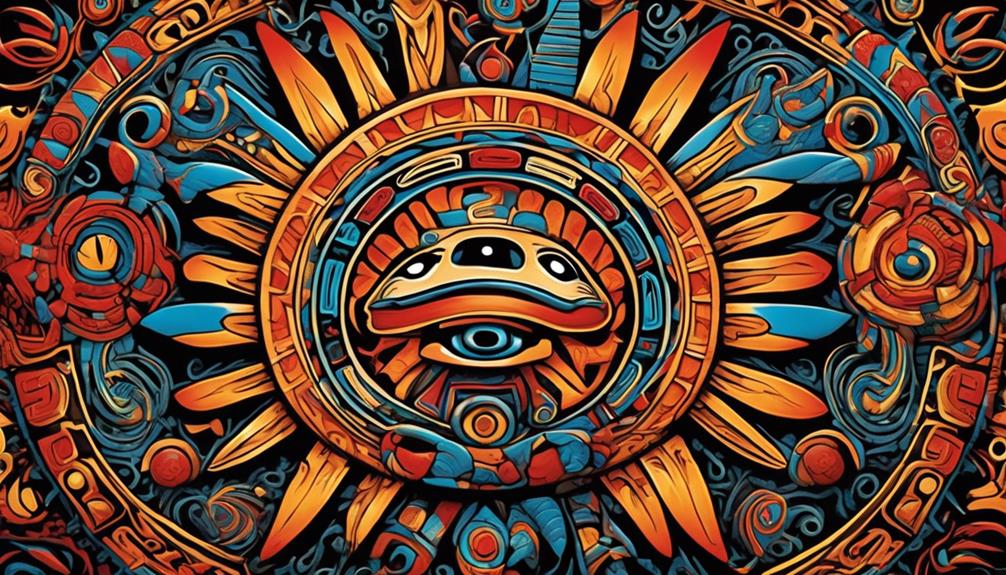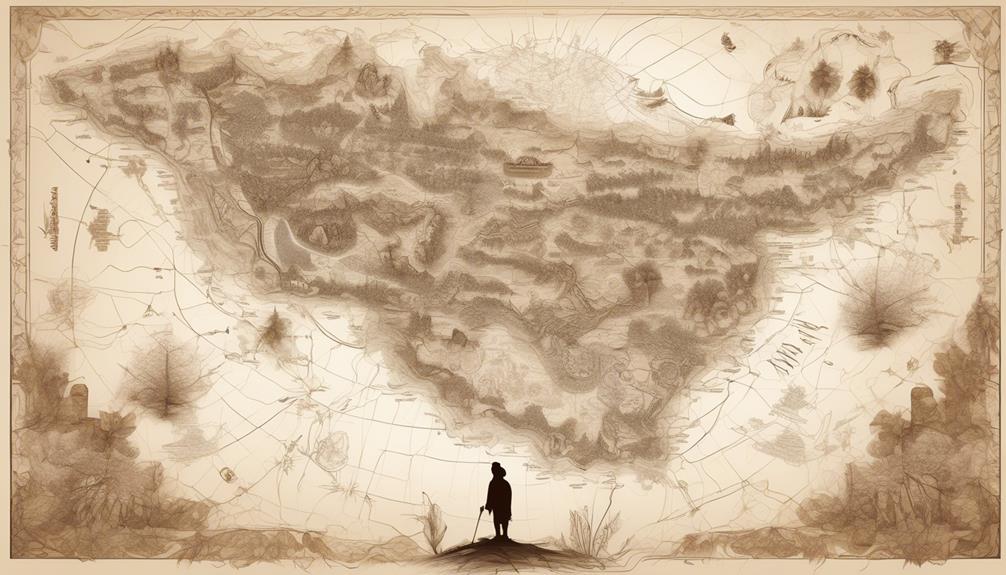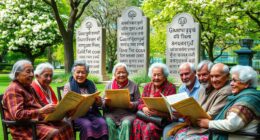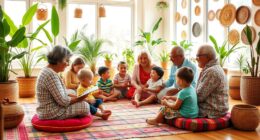Potlatch, a significant and enduring tradition of the Indigenous people of the Pacific Northwest, has played a crucial role in their cultural and societal framework for generations.
However, the enforcement of a particular policy in the late 19th century led to the prohibition of this potent and poignant tradition.
The impact of this prohibition was extensive, affecting not only the ceremonial and spiritual aspects of Indigenous communities but also their economic and social structures.
The story of which country imposed this ban and the subsequent consequences holds a crucial key to understanding the complex dynamics of cultural suppression and resilience.
Key Takeaways
- The Canadian government imposed a ban on the potlatch in the late 19th century.
- The potlatch prohibition lasted from 1884 to 1951.
- The ban was part of a strategy to eradicate Indigenous cultural traditions and assimilate Indigenous peoples.
- Indigenous communities persisted in practicing potlatch in secret, demonstrating resilience.
Origins and Significance of Potlatch
The origins and significance of the Indigenous practice of potlatch can be traced back to the complex social, economic, and spiritual traditions of the Pacific Northwest Native American tribes. This cultural celebration and communal exchange held immense importance within the tribal communities, serving as a means of reinforcing social ties, redistributing wealth, and commemorating significant events.
The potlatch was a multifaceted ceremony where hosts would give away material goods, such as blankets, food, and intricately carved objects, to demonstrate their wealth, status, and generosity. In turn, guests were expected to reciprocate with even greater gifts at a future potlatch, thereby initiating a cycle of communal exchange and mutual obligation.
The potlatch wasn't merely a material exchange but also a symbolic and spiritual one, embodying the interconnectedness of individuals within the community. Through elaborate feasts, storytelling, song, and dance, the potlatch served as a platform for the transmission of cultural knowledge, values, and traditions from one generation to the next. Its significance extended beyond economic transactions, encompassing the preservation of ancestral heritage and the reinforcement of collective identity within Indigenous societies.
Imposition of the Potlatch Prohibition
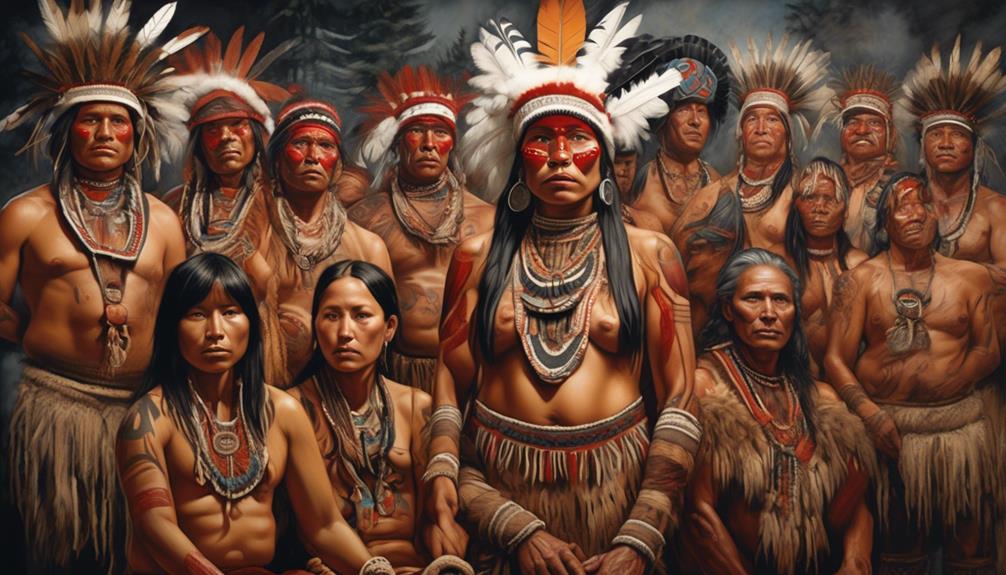
Imposing a ban on the centuries-old Indigenous practice of potlatch was a significant and controversial decision made by the Canadian government in the late 19th century. The potlatch prohibition, which lasted from 1884 to 1951, was part of a broader strategy of colonial oppression aimed at eradicating Indigenous cultural traditions and assimilating Indigenous peoples into Euro-Canadian society.
The potlatch, a ceremonial feast and gift-giving event, held deep cultural and social significance for Indigenous communities on the Northwest Coast of Canada, serving as a means of redistributing wealth, solidifying social hierarchies, and commemorating important life events.
The imposition of the potlatch prohibition represented a direct attack on Indigenous autonomy and cultural identity. By outlawing this central practice, the Canadian government sought to undermine traditional power structures within Indigenous communities and assert colonial authority. The ramifications of this prohibition were profound, disrupting social cohesion, economic systems, and the transmission of cultural knowledge from one generation to the next.
However, despite the oppressive measures, Indigenous communities persisted in practicing potlatch in secret, demonstrating resilience in the face of colonial oppression.
Impact on Indigenous Communities
Frequently overlooked in historical narratives, the lasting repercussions of the potlatch prohibition on Indigenous communities remain a focal point of scholarly inquiry and cultural restoration efforts. The ban on potlatch ceremonies had devastating effects on Indigenous communities, leading to the erosion of cultural practices and the suppression of Indigenous rights. The impact of the prohibition was profound, as it disrupted traditional social, political, and economic systems, causing intergenerational trauma and loss of cultural identity. However, contemporary efforts are focused on revitalizing Indigenous traditions and promoting cultural preservation.
| Impact on Indigenous Communities | |
|---|---|
| Erosion of Cultural Practices | Suppression of Indigenous Rights |
| Disruption of Traditional Systems | Intergenerational Trauma |
| Loss of Cultural Identity | Revitalization and Cultural Preservation Efforts |
These impacts have spurred initiatives to restore Indigenous rights and revitalize cultural practices. Efforts are underway to reclaim and celebrate traditional ceremonies, including the potlatch, as a means of healing and reclaiming cultural identity. Furthermore, there is a growing recognition of the importance of centering Indigenous voices in cultural preservation efforts, ensuring that the legacy of the potlatch prohibition is not just one of suppression, but also one of resilience and cultural revitalization.
Resistance and Reclamation
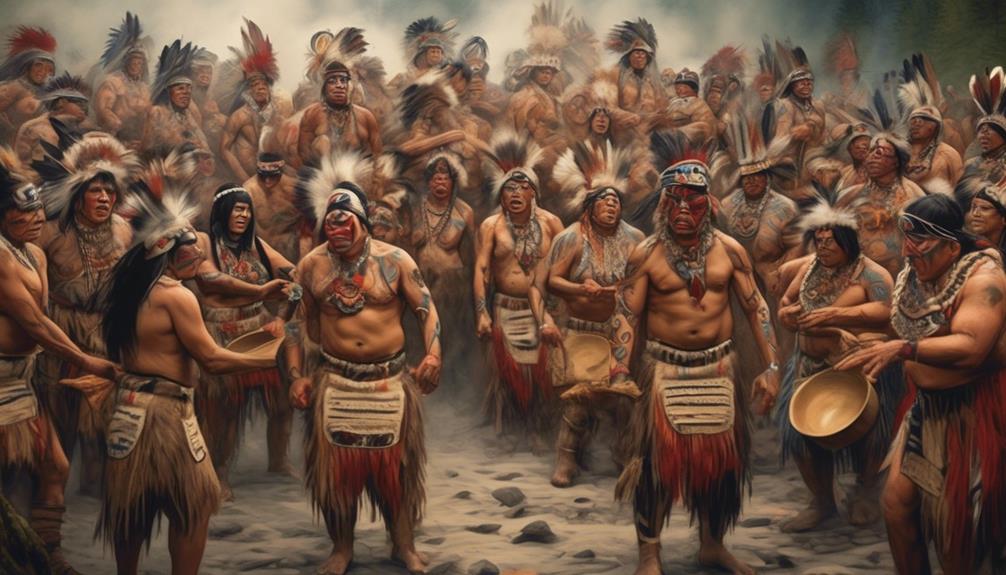
Our research highlights the enduring acts of resistance and cultural reclamation by Indigenous communities in response to the outlawing of the potlatch ceremony. Despite the suppression of their cultural practices, Indigenous communities have demonstrated remarkable resilience and determination in preserving and reviving their traditions.
- Clandestine Ceremonies: Many Indigenous groups continued to hold potlatch ceremonies in secret, risking severe punishment to safeguard their cultural heritage.
- Legal Advocacy: Through legal channels, Indigenous leaders and activists have fought for the recognition and protection of their ceremonial practices, contributing to the repeal of oppressive laws.
- Cultural Education: Indigenous communities have prioritized cultural education, passing down traditional knowledge and practices to younger generations, ensuring the continuity of their cultural identity.
- Artistic Expression: Through art, music, and dance, Indigenous peoples have reclaimed their cultural heritage, using creative forms of expression to celebrate and preserve their traditions.
These acts of resistance and cultural revival illustrate the unwavering dedication of Indigenous communities in reclaiming their cultural practices and challenging historical oppression. Despite facing numerous obstacles, their perseverance serves as a testament to the strength and resilience of Indigenous cultures.
Contemporary Relevance and Healing
Evident in contemporary discourse and cultural initiatives, the enduring legacy of the outlawed potlatch ceremony continues to shape the healing and revitalization efforts within Indigenous communities. The revival of the potlatch tradition serves as a powerful healing practice, providing a platform for cultural preservation and community bonding. Through the reinstatement of this ceremonial practice, Indigenous communities are reclaiming their cultural identity and strengthening their connections to ancestral traditions, fostering a sense of belonging and pride among the younger generations.
In addition to its cultural significance, the potlatch ceremony also plays a pivotal role in healing historical trauma caused by colonial oppression. By reviving and practicing the potlatch, Indigenous communities are engaging in a form of resilience, asserting their agency in the face of past injustices. This resurgence of traditional practices not only facilitates healing at an individual and collective level but also contributes to the broader societal understanding of the importance of cultural preservation and the recognition of Indigenous knowledge systems.
As Indigenous communities continue to navigate the complexities of contemporary life, the potlatch ceremony stands as a testament to the resilience and strength of Indigenous traditions, offering a pathway for healing and cultural revitalization.
Frequently Asked Questions
How Did the Outlawing of Potlatch Affect the Economic and Social Structure of Indigenous Communities?
The outlawing of potlatch had significant economic impact and disrupted social cohesion within indigenous communities.
The practice of potlatch was a crucial economic and social institution, fostering reciprocity and redistribution of wealth. Its prohibition led to the erosion of traditional economic systems and exacerbated poverty.
Moreover, it undermined social ties and cultural identity, causing profound social disintegration. These repercussions highlight the detrimental effects of colonial policies on indigenous communities.
What Were Some of the Specific Ways That Indigenous Communities Resisted the Potlatch Prohibition?
In exploring resistance methods, cultural preservation, traditional ceremonies, and community solidarity among indigenous communities, it's fascinating to uncover the ways in which these groups defied the potlatch prohibition.
The ingenious tactics included hosting secret potlatches, disguising ceremonies as other events, and carrying out the practice in remote areas. These actions not only demonstrated resilience but also showcased the deep-rooted commitment to preserving cultural traditions in the face of adversity.
How Has the Contemporary Relevance of Potlatch Evolved in Indigenous Communities Today?
In indigenous communities today, the contemporary relevance of potlatch has evolved as a powerful tool for cultural revitalization, community empowerment, and intergenerational healing.
Through the revival of this traditional practice, we witness the restoration of cultural identity and the strengthening of community bonds.
The act of engaging in potlatch ceremonies serves as a means of reclaiming and preserving indigenous traditions, fostering a sense of pride and connection among community members.
What Are Some of the Healing Practices That Have Been Employed to Address the Trauma Caused by the Potlatch Prohibition?
Healing practices play a pivotal role in the cultural revival process.
Various methods, including traditional ceremonies, storytelling, and art therapy, have been employed to address the trauma caused by the potlatch prohibition.
These practices enable us to reconnect with our heritage and community, fostering resilience and empowerment.
The integration of ancestral knowledge and contemporary therapeutic techniques has proven to be instrumental in healing intergenerational wounds and revitalizing indigenous traditions.
Are There Any Ongoing Legal or Political Efforts to Address the Historical Impact of the Potlatch Prohibition on Indigenous Communities?
Legal reform and Indigenous rights remain crucial in addressing the historical impact of the potlatch prohibition on indigenous communities.
Ongoing efforts seek to rectify past injustices and ensure cultural practices are protected. Various organizations and legal advocates are working towards legislative changes to recognize and honor indigenous traditions.
These efforts are vital in acknowledging the harm caused and promoting healing and reconciliation within affected communities.
Conclusion
In conclusion, the outlawing of the indigenous practice of potlatch in Canada had a devastating impact on indigenous communities, stripping them of their cultural traditions and heritage.
While some may argue that the prohibition was necessary for assimilation and control, it's important to recognize the resilience and resistance of indigenous peoples in reclaiming their traditions and the ongoing efforts towards healing and reconciliation.
The legacy of the potlatch prohibition continues to shape the contemporary landscape of indigenous rights and cultural revitalization.
Mary is a passionate writer who brings creativity and a fresh perspective to our team. Her words have the power to captivate and inspire, making her an essential contributor to our content. Mary’s commitment to storytelling and dedication to promoting Indigenous culture ensures that her work touches the hearts of our readers. We’re fortunate to have her as part of our team.
